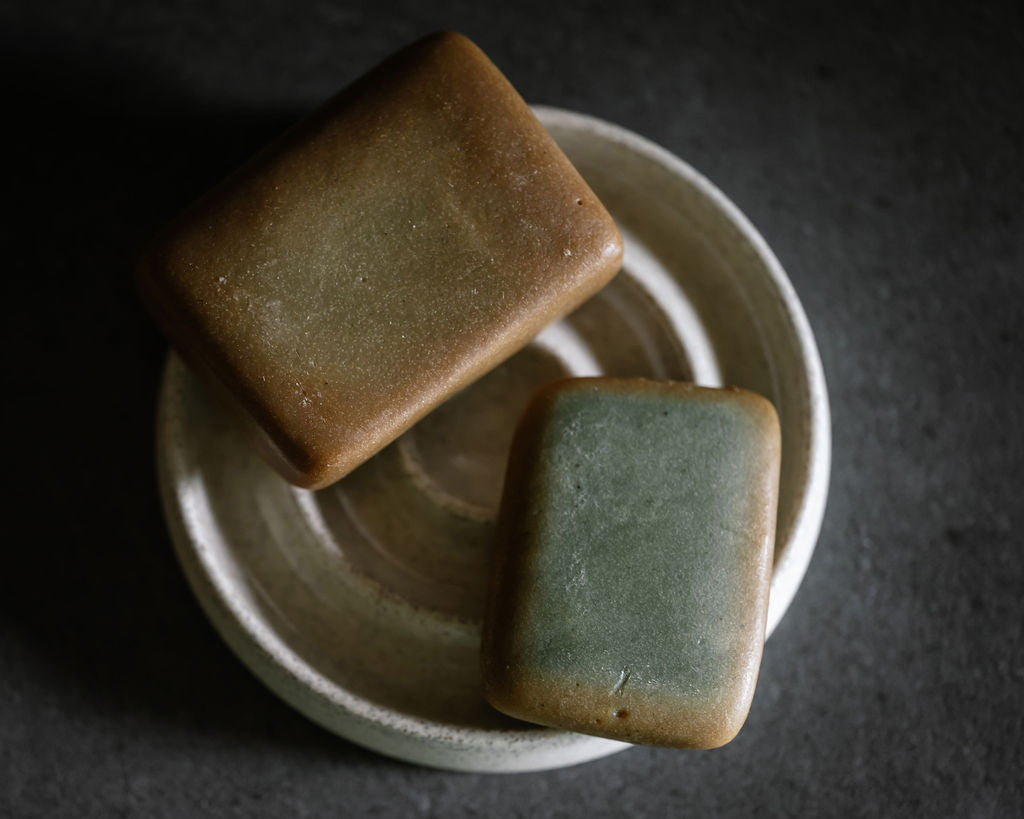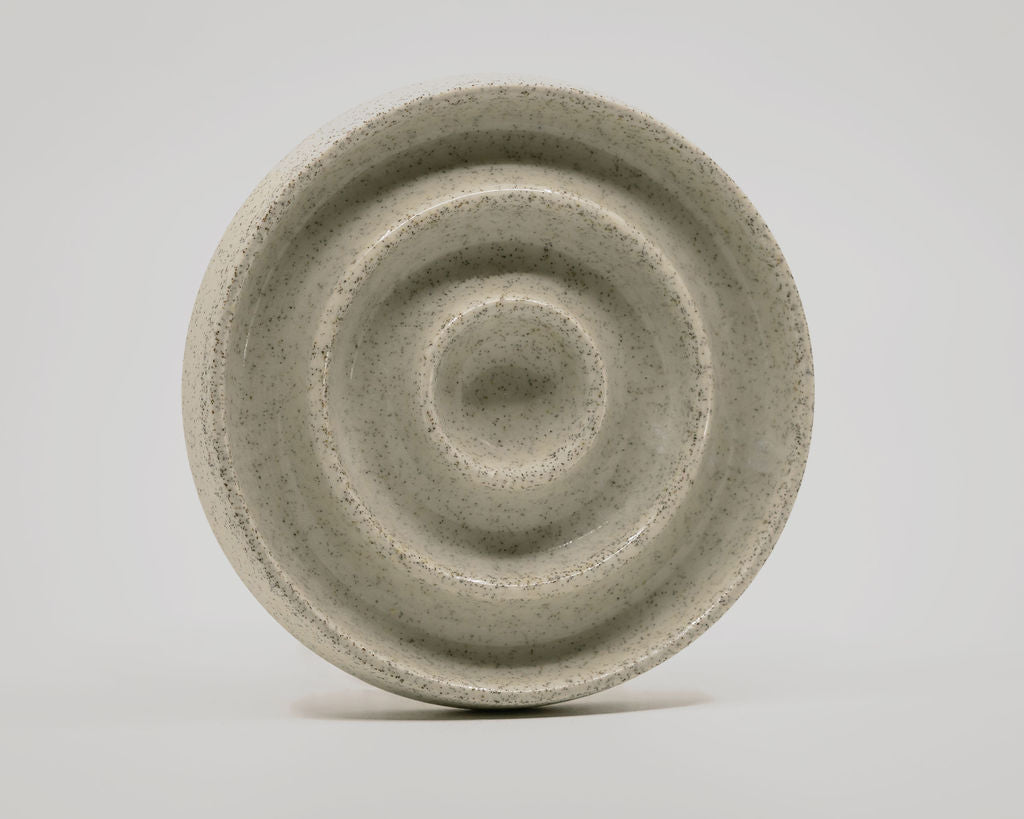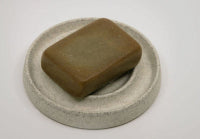Alepp x Ghost Wares Soap Dish
Alepp x Ghost Wares Soap Dish
Couldn't load pickup availability
These beautiful Ghost Wares ceramic soap dishes are handmade in Melbourne on a pottery wheel. Designed to keep the soap out of the water, the intriguing design is both practical and beautiful. They are 11cm in diameter in size.
Matthew Vrettas and Stephanie Yap are the team behind Ghost Wares, a ceramic design studio with an emphasis on creating objects that are elegant but playful. They aim to make products that feel precious but familiar - objects that can blend into the background but with enough character to make them interesting and personal.
The couple create their own clays to bring variation to the range. By changing the clay itself the objects have a sense of integrity, they are devoid of decoration and express what they are made of. These soap dishes follow this approach, their monolithic form gives them a minimalist and timeless aesthetic.



Frequently Asked Questions
-
Olive oil and laurel berry oil are the only two ingredients that remain in Aleppo Soap following its nine month curing process. During production, olive oil, laurel berry oil, lye and water are combined to create saponification, which is the chemical reaction between the lye and fat that makes bar soap.
Laurel berry oil comes from the Laurus Nobilis tree, a large evergreen tree native to the Mediterranean basin which thrives on the Syrian coast around Aleppo.The elegant Laurus Nobilis tree blooms in mid-April when beautiful yellow flowers grow in clusters and produce berries that resemble brown olives.Fruit is picked in autumn, then manually harvested and pressed in traditional methods handed down by villagers from one generation to the next. The laurel berries are boiled in large pots until the oil floats to the surface of the water. It is then collected and sold to specialised merchants and then to the owners of traditional soap factories and spice shops in the old markets of Aleppo.
Traditional aleppo soap uses a 'hot process' with large vats of olive oil, water and lye. Underground fires or other sources heat the ingredients over days so the oil reacts with the lye and water to create a thick liquid soap. The hero ingredient is laurel oil which comes in at the end of the process. The mix is taken from the vat and poured over a large sheet of waxed paper on the floor of the factory. At this point, the soap is a large, green, flat mass, and it is allowed to cool down and harden.The soap is then cut into cubes and stamped and stacked in staggered cylindrical shapes to allow maximum air exposure and are then aged from six months to a year. While it is ageing, the soap goes through several natural chemical changes. The free alkaline content of the soap (the alkaline which did not react with the oil during saponification) breaks down upon slow reaction with air. The moisture content of the soap is also reduced, making the soap hard and long- lasting. And lastly, the external colour of the soap turns pale gold, while the inside remains green.
Store in a cool, dry place which prevents softening, sweating, or mould due to humidity.Avoid airtight plastic containers as Aleppo soap needs to breathe—trapping moisture can cause sweating.Use breathable materials (e.g. cardboard boxes, cloth bags) which allows the soap to age naturally and continue drying (which improves quality).Keep out of direct sunlight - UV light can fade colour and alter scent or consistency.
Only by nature! Alepp has a wonderful natural, spicy/earthy scent that comes from the laurel berry oil. It is a distinct fragrance synonymous with the soap.


